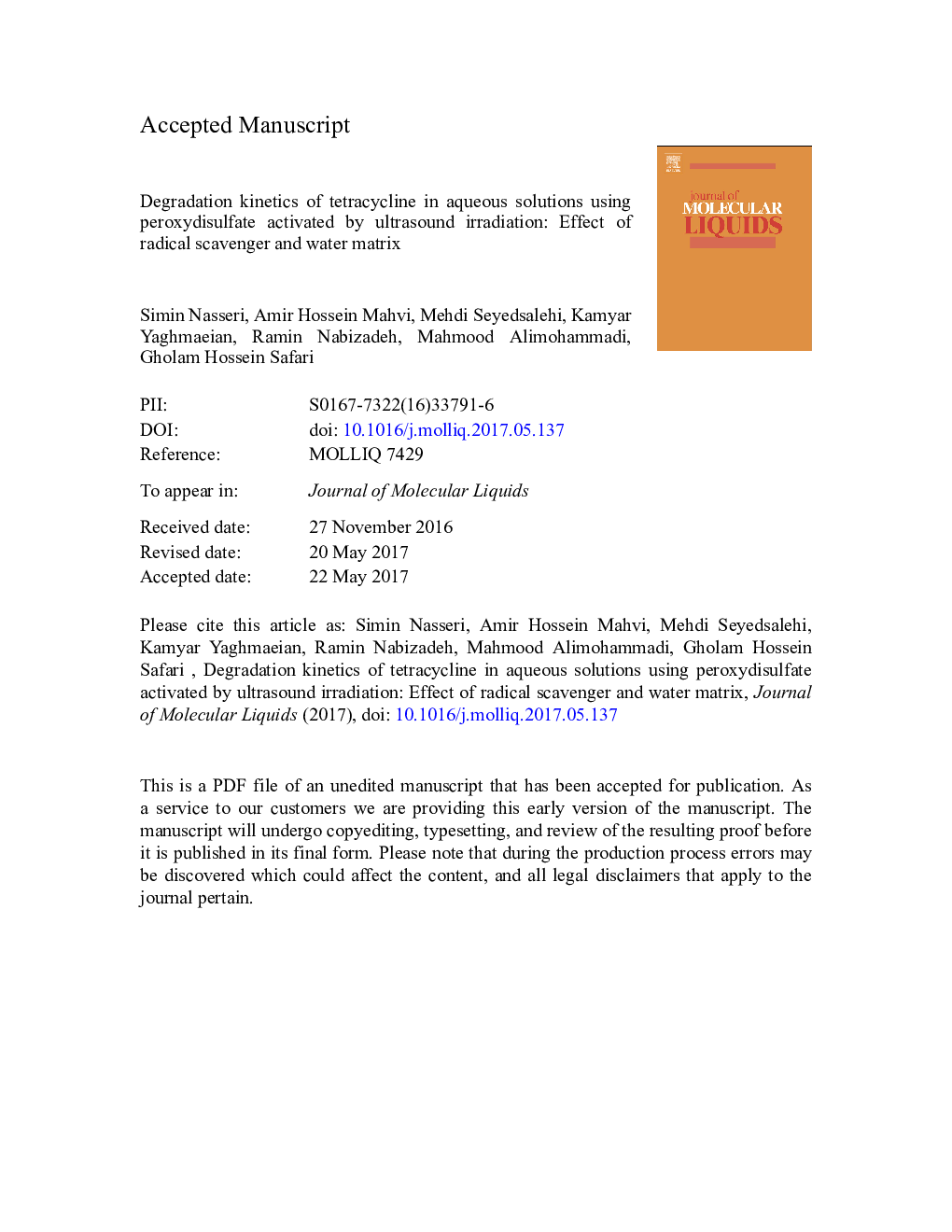| Article ID | Journal | Published Year | Pages | File Type |
|---|---|---|---|---|
| 5408377 | Journal of Molecular Liquids | 2017 | 42 Pages |
Abstract
Degradation kinetics of the tetracycline antibiotic in aqueous solution was investigated using sulfate radicals under ultrasound irradiation. The effect of various operational parameters including initial tetracycline concentration, initial peroxydisulfate concentration, solution pH, reaction time, temperature, ultrasound power, the presence of natural organic matter, radical scavenger (tert-butyl alcohol and methanol), as well as the chemical composition of water using ultrapure water, drinking water, and secondary effluent on the degradation efficiency of tetracycline were studied. The preliminary studies were performed using only peroxydisulfate, ultrasound and ultrasound activated peroxydisulfate. The results indicated that tetracycline degradation rate increased with the increase of initial peroxydisulfate concentration, temperature and ultrasonic power, but decreased with the increase of initial tetracycline concentration. The tetracycline degradation rate was highly dependent of initial pH of the solution. The degradation of tetracycline followed the first-order kinetics. The addition of humic acid in concentrations above 10 mg·Lâ 1 decreased the degradation rate of tetracycline, although the effect could be compensated using higher concentrations of peroxydisulfate. The role of active radicals (sulfate and hydroxyl radicals) was investigated using radical scavengers of methanol and tert-butyl alcohol. Under optimum operational conditions, 96.5% of tetracycline removal was achieved with chemical oxygen demand and total organic carbon removal of about 74% and 61.2%, respectively. The degradation rate of tetracycline was higher in drinking water compared to ultrapure water. Finally, the intermediates were identified and the possible degradation pathway of tetracycline was investigated. Overall, ultrasound activated peroxydisulfate was found to be a promising process for tetracycline degradation in aqueous solutions.
Keywords
TBAMTBEPMSTCSTOCTCALC-MSPDSAOPsSTPUV–VisBottled waterultrapure waterdeionized waterHumic acidUltravioletultraviolet visibleTert-butyl alcoholTetracyclineTetracyclinesSonochemical degradationTrichloroethanechemical oxygen demandSulfate radicalKineticsTap waterSecondary effluentUltrasoundAdvanced oxidation processesMethanolmethyl tert-Butyl etherNatural organic matterNOMPeroxymonosulfatePeroxydisulfatePersulfateCodhigh-performance liquid chromatographyHPLCTotal organic carbonSewage treatment plants
Related Topics
Physical Sciences and Engineering
Chemistry
Physical and Theoretical Chemistry
Authors
Simin Nasseri, Amir Hossein Mahvi, Mahdi Seyedsalehi, Kamyar Yaghmaeian, Ramin Nabizadeh, Mahmood Alimohammadi, Gholam Hossein Safari,
